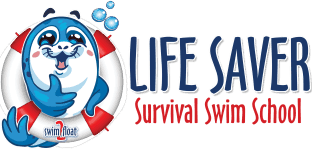
Taking your infant to their first swim lesson is an exciting milestone! It’s a wonderful opportunity to introduce your baby to the water, bond with them, and lay the foundation for water safety and swimming skills. However, preparing for this experience requires careful planning to ensure your baby is comfortable, safe, and ready to enjoy their time in the pool. This guide will walk you through everything you need to know to prepare your infant for their first swim lessons at a swimming school.
Why Start Swim Lessons at 6 Months?
At 6 months old, babies are developmentally ready to explore new environments, and water is a natural sensory playground for them. Early swim lessons can help infants become comfortable in the water, learn basic water safety skills, and develop motor skills like kicking and reaching. Additionally, parent-and-baby swim classes provide a unique bonding experience and a chance to socialize with other parents and babies.
Step 1: Choose the Right Swim School
The first step in preparing for your baby’s swim lessons is selecting a swim school that caters to infants. Here’s what to look for:
Infant-Specific Programs: Ensure the swim school offers classes specifically designed for babies aged 6 months and up. These classes should focus on water acclimation, safety, and fun rather than formal swimming techniques.
Certified Instructors: Look for instructors who are certified in infant swim safety and have experience working with young children. Certifications from organizations like the American Red Cross or the United States Swim School Association (USSSA) are a good sign.
Warm Water Temperature: Babies lose body heat quickly, so the pool should be heated to a comfortable temperature (around 90°F or 32°C).
Small Class Sizes: Smaller classes ensure your baby gets individualized attention and a safe, controlled environment.
Parent Involvement: For infants, parent-and-baby classes are ideal. These classes allow you to be in the water with your child, providing comfort and reassurance.
Step 2: Prepare Your Baby for the Water
Before the first lesson, take some time to help your baby get used to the sensation of water. This will make the transition to the pool smoother and more enjoyable.
Bath Time Practice: Use bath time to gently introduce your baby to water. Pour water over their body and face, and encourage splashing and play. This helps them become comfortable with the feeling of water on their skin.
Practice Floating: Support your baby in a reclined position in the bath to mimic floating. Sing songs or talk soothingly to keep them calm and relaxed.
Introduce Breath Control: Gently cue your baby before pouring water over their face by saying a phrase like “1, 2, 3, go!” This helps them learn to hold their breath and prepares them for brief submersion in the pool.
Step 3: Pack the Essentials
Being well-prepared for the swim lesson will help you focus on enjoying the experience with your baby. Here’s a checklist of items to bring:
Swim Diapers: Most swim schools require babies to wear reusable or disposable swim diapers to prevent accidents in the pool. Pack an extra one just in case.
Towels: Bring a soft, hooded towel to wrap your baby in after the lesson. Consider bringing an extra towel for yourself as well.
Change of Clothes: Pack a fresh outfit for your baby to wear after the lesson.
Baby Wetsuit or Rash Guard: A wetsuit or rash guard can help keep your baby warm in the pool and protect their sensitive skin from chlorine.
Post-Swim Snacks or Bottles: Swimming can make babies hungry, so bring a bottle or snack for after the lesson.
Toys: Some swim schools allow you to bring small, water-safe toys to make the experience more fun for your baby.
Diaper Bag Essentials: Don’t forget your usual diaper bag items, such as diapers, wipes, and a change pad.
Step 4: Prepare Yourself Mentally and Emotionally
As a parent, your attitude and demeanor play a big role in how your baby experiences swim lessons. Here’s how to prepare yourself:
Stay Calm and Positive: Babies are highly perceptive and can pick up on your emotions. If you’re relaxed and excited, your baby is more likely to feel the same way.
Set Realistic Expectations: The first few lessons are about acclimating your baby to the water, not teaching them to swim. Be patient and celebrate small milestones, like splashing or kicking.
Be Prepared for Tears: It’s normal for babies to cry during their first swim lesson. Stay calm, comfort your baby, and trust the process. Most babies adjust quickly with time and consistency.
Step 5: What to Expect During the First Lesson
Infant swim lessons are typically short (20-30 minutes) and focus on building comfort in the water. Here’s what you might experience during the first class:
Water Introduction: The instructor will guide you through gentle activities to help your baby get used to the water, such as dipping their toes, splashing, and floating on their back with your support.
Breath Control: The instructor may teach you how to gently cue your baby before pouring water over their face or briefly submerging them. This helps babies learn to hold their breath.
Floating and Kicking: You’ll practice supporting your baby in a floating position and encourage them to kick their legs. These activities help build muscle strength and coordination.
Songs and Games: Many classes incorporate songs and games to make the experience fun and engaging. For example, “motorboat” games encourage kicking, while “ring around the rosy” helps babies feel comfortable moving in the water.
Safety Skills: While infants are too young to learn formal swimming, they can begin to learn basic safety skills, such as grabbing the edge of the pool or rolling onto their back to float.
Step 6: After the Lesson
Once the lesson is over, take some time to help your baby wind down and reflect on the experience.
Dry and Warm Your Baby: Wrap your baby in a warm towel and change them into dry clothes as soon as possible to prevent them from getting cold.
Feed and Comfort Them: Swimming can be tiring for babies, so offer a bottle or snack and cuddle them to help them relax.
Observe Their Reaction: Pay attention to how your baby responds to the lesson. If they seem happy and relaxed, it’s a good sign they enjoyed the experience. If they seem overwhelmed, give them time to adjust and try again next time.
Practice at Home: Use bath time to reinforce skills like pouring water over your baby’s face or practicing floating.
Safety Tips for Parents
Safety should always be your top priority when introducing your baby to the water. Here are some key guidelines to follow:
Never Leave Your Baby Unattended: Even in a supervised class, always keep your hands on your baby and stay within arm’s reach.
Learn CPR: Knowing infant CPR can give you peace of mind and prepare you for emergencies.
Avoid Submersion if Your Baby is Uncomfortable: While brief submersion is a common part of infant swim lessons, never force your baby underwater if they seem scared or resistant.
Watch for Signs of Discomfort: If your baby is shivering, crying excessively, or seems tired, it’s time to get out of the water.
In review, taking your 6-month-old to their first swim lesson is a special experience that can set the stage for a lifetime of water safety and enjoyment. By choosing the right swim school, preparing thoughtfully, and prioritizing safety, you can ensure that your baby’s first swim lesson is a positive and memorable experience. Remember, the goal is not to create a champion swimmer but to nurture a love for the water and build confidence. So pack your bag, grab your swimsuit, and get ready to make a splash with your little one!
Enroll Your Child at Life Saver Survivor Swim School for Their First Swim Lessons
Not only their first swim lessons, but you will learn to do it for all of them! Our school’s owner, Bonnie, and all of her teachers have years of experience… in fact, nearly 25 straight years. Don’t hesitate to enroll your children in one of our upcoming classes. Go HERE! Or, if you might have a few questions, don’t hesitate to call. Pick up your phone and dial (832) 366-3008.

